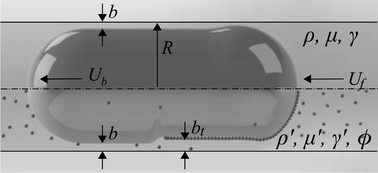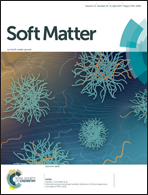Armoring confined bubbles in the flow of colloidal suspensions
Abstract
We study the process of coating the interface of a long gas bubble, which is translating in a horizontal circular capillary tube filled with a colloidal suspension. A typical elongated confined bubble is comprised of three distinct regions: a spherical front cap, a central body that is separated from the tube wall by a thin liquid film, and a spherical cap at the back. These three regions are connected by transitional sections. Particles gradually coat the bubble from the back to the front. We investigate the mechanisms that govern the initial accumulation of the particles and the growth of the particle-coated area on the interface of the bubble. We show that the initial accumulation of particles starts at the stable stagnation ring on the rear cap of the bubble, and the particles will completely coat the spherical cap at the back of the bubble before accumulating on the central body. Armoring the central interface of the bubble with particles thickens the liquid film around the bubble relative to that around the particle-free interface. This effect creates a rather sharp step on the interface of the bubble in the central region, which separates the armored region from the particle-free region. After the bubble is completely coated, the liquid film around the body of the bubble will adjust again to an intermediate thickness. We show that the three distinct thicknesses that the liquid film acquires during the armoring process can be well described analytically.



 Please wait while we load your content...
Please wait while we load your content...